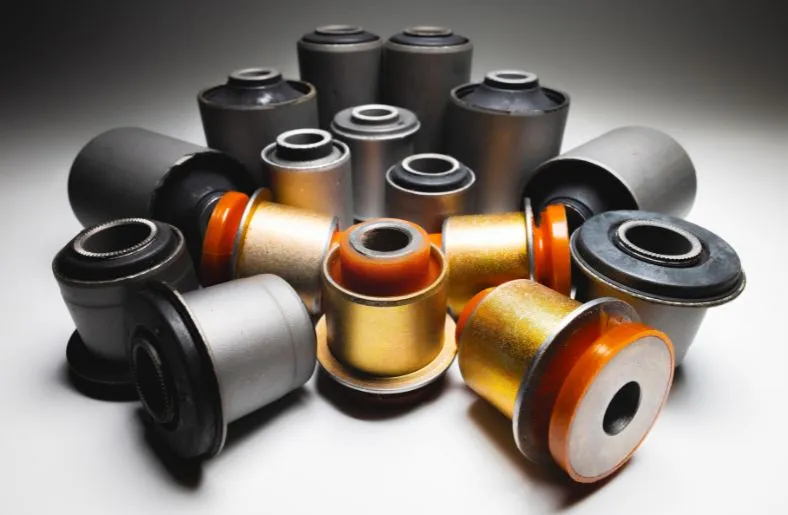Suspension bushings play a critical role in the overall performance and handling of a vehicle. These small yet important components are designed to provide a cushioning effect between various moving parts of the suspension system, reducing friction, vibration, and noise. Over time, however, these bushings can become dry and worn, compromising their effectiveness. That’s where proper lubrication comes into play.
In this article, we will discuss in detail about how to lubricate suspension bushings.
Table of Contents
Why Lubricating Suspension Bushings is Important
Lubricating your suspension bushings is crucial for maintaining optimal performance and extending their lifespan. Without proper lubrication, the bushings can experience excessive friction and wear, leading to a range of issues. These can include reduced suspension travel, increased noise and vibration, and compromised handling and stability.
By regularly lubricating your suspension bushings, you can ensure smooth and quiet operation, enhance your vehicle’s handling characteristics, and prolong the lifespan of these critical components.
Signs That Your Suspension Bushings Need Lubrication
Knowing when and how to lubricate suspension bushings is key to maintaining peak performance. Several signs indicate your bushings may need lubrication. First, pay attention to any unusual noise coming from your suspension system, such as squeaks or creaks. These sounds can be an indication of dry or worn bushings.
Additionally, if you notice a decrease in overall ride quality, including roughness or excessive vibration, it may be time to lubricate your bushings. Lastly, inspect your bushings visually for signs of wear, cracking, or dryness. If you notice any of these signs, it’s time to take action and follow the guide on how to lubricate suspension bushings.
How to Lubricate Suspension Bushings: A Step-by-Step Guide
Lubricating your suspension bushings is a relatively simple process that can be done with a few basic tools and materials. Here’s a step-by-step guide on how to lubricate suspension bushings.
Step 1: Gather the Necessary Tools and Materials
Before you begin following the guide on how to lubricate suspension bushings, make sure you have the following tools and materials:
- Jack stands or a hydraulic lift
- Jack
- Lubricant (preferably silicone-based)
- Grease gun
- Clean cloth or rag
Step 2: Lift the Vehicle
Using a jack, lift the vehicle off the ground and secure it with jack stands or a hydraulic lift. This will provide you with enough clearance to access the suspension components.
Step 3: Locate the Suspension Bushings
Identify the suspension bushings that need lubrication. These are typically found at the connection points between various suspension components, such as control arms, sway bars, and shock absorbers.
Step 4: Clean the Bushings
Before applying lubricant, it’s essential to clean the bushings thoroughly. Use a clean cloth or rag to remove any dirt, debris, or old lubricant from the surface of the bushings.
Step 5: Apply Lubricant
Using a grease gun, apply a generous amount of lubricant to the surface of the bushings. Ensure that the lubricant reaches all the moving parts of the bushings for optimal effectiveness.
Step 6: Reassemble and Lower the Vehicle
Once you have lubricated all the necessary bushings, reassemble any disconnected components and lower the vehicle back to the ground. Take a moment to ensure that everything is securely in place before moving on.
Tools and Materials Needed for the Lubrication Process
To successfully lubricate your suspension bushings, you will need the following tools and materials:
- Jack stands or a hydraulic lift: These are essential for lifting the vehicle off the ground and providing adequate clearance.
- Jack: A jack is necessary for raising the vehicle to access the suspension components.
- Lubricant: Choose a high-quality silicone-based lubricant specifically designed for suspension bushings.
- Grease gun: A grease gun makes it easy to apply lubricant precisely and efficiently.
- Clean cloth or rag: This is used to clean the bushings before applying lubricant and to wipe away any excess lubricant afterward.
Related Guide: The Ultimate Guide to Using WD-40 on Rubber Seals: Benefits, Risks, and Best Practices (2023-2024)?
Common Mistakes to Avoid When Lubricating Suspension Bushings
While lubricating your suspension bushings is a relatively straightforward process, there are a few common mistakes to avoid to ensure optimal results. Firstly, make sure to use the correct type of lubricant. Silicone-based lubricants are recommended for suspension bushings due to their compatibility with various materials and resistance to heat and moisture.
Secondly, do not over-lubricate the bushings. Applying excessive amounts of lubricant can lead to messy and ineffective results. Lastly, take care not to contaminate the bushings with dirt or debris during the lubrication process. Clean the bushings thoroughly before applying lubricant to prevent any contaminants from getting trapped and causing further damage.
How Often Should You Lubricate Your Suspension Bushings?
The frequency of lubricating your suspension bushings depends on several factors, including the type of vehicle, driving conditions, and the quality of the bushings. As a general rule of thumb, it is recommended to lubricate your suspension bushings at least once a year or every 12,000 miles.
However, if you frequently drive on rough roads or encounter harsh weather conditions, more frequent lubrication may be necessary. Additionally, if you notice any signs of wear or decreased performance, it’s best to inspect and lubricate your bushings as soon as possible.
FAQs
1. What can I use to lubricate bushings?
Silicone grease is widely used for rubber suspension bushings due to its excellent lubricating properties and compatibility with rubber. It can help reduce friction and wear on the bushings, and it also provides excellent protection against water and other corrosive substances.
2. Should you grease suspension bushings?
Regularly greasing the bushings and lubing the uni-balls will help ensure the components are operating at their best and extend the life of each moving part. We recommend greasing upper control arm bushings every 3,000-5,000 miles.
3. Can I spray WD 40 on my suspension?
The stem of the shock absorber can be treated with a few sprays of WD-40 Specialist Water Resistant Silicone Lubricant, which has excellent lubricating properties to ensure the perfect movement of parts. The product does not attract dirt and insulates from moisture after quickly drying.
Conclusion
Lubricating your suspension bushings is a simple yet vital maintenance task that can significantly enhance the performance and longevity of your vehicle’s suspension system. By following the step-by-step guide on how to lubricate suspension bushings as discussed above and avoiding common mistakes, you can ensure that your suspension bushings operate smoothly and quietly, providing you with optimal handling and ride comfort.
Remember to regularly inspect and lubricate your bushings to enjoy the many benefits of a well-maintained suspension system. So, take the time to give your suspension bushings the attention they deserve, and you’ll be rewarded with a smoother and more enjoyable driving experience.

